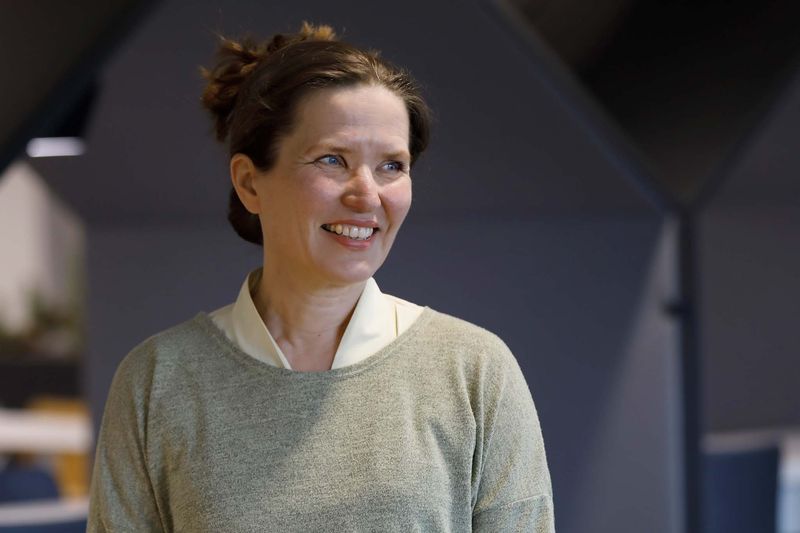Substantial growth in female employees’ coping difficulties also surprised working life researcher

At the beginning of this week, the Finnish Broadcasting Company reported how “Explosive growth in mental health problems has surprised employers.” The turn for the worse has taken place in 2016. Mental health disturbances are the most common reason for women to receive sickness allowance; they have particularly increased among young and early middle-aged women.
“Explosive growth” in employees’ various coping problems after 2013 also surprised us researchers, when the data for the 2018 Quality of Work Life Survey were completed. The growth has been conspicuous for young and early middle-aged women in the 2000s.
While the share of female employees experiencing feelings of fatigue, unwillingness or lack of energy at least weekly has remained at around 40 per cent in all three previous Quality of Work Life Surveys in the 2000s, the corresponding share was striking 50 per cent in 2018.
The share was even higher than this for young women aged 25 to 34. The corresponding share has been around 30 per cent for men throughout the 2000s.
Sleeping difficulties, irritability and tension and feeling of everything being beyond one’s strength at least weekly have all increased in great leaps between 2013 and 2018.
It is particularly worrying that psychological symptoms are as a rule most common for young adults and early middle-aged women. They have become more general especially for women aged under 45 over the 2000s.
Concentration and memory problems also build up among women in their young adulthood or early middle age. In 2018, good one quarter (26%) of all employees experienced at least weekly difficulties in concentrating and as many in remembering things. The shares were highest for women aged 25 to 34 (39% and 36%) and 35 to 44 (36% and 35%).
The main reason for mental health problems of working-age people is naturally not always found in work pressures. Feeling bad often comes as an outcome of several factors, and life can be quite hectic in the peak years in general. However, it is obvious based on the Quality of Work Life Survey data that the share of work environment factors cannot be disregarded.
Psychological symptoms are clearly more common for employees who feel time pressure causes much harmful strain at work, whose work is mentally heavy, whose workplace has plenty of conflicts and bullying, who are more dissatisfied with the management style of their superior or who feel digitalisation has increased the burdening of work than those employees who have eluded the problems concerned.
And then again: especially harmful time pressure but also mental strain of work have alarmingly become more common in recent years – for female employees precisely.
It is particularly worrying that the share of female employees considering serious burnout a clear risk at work has more than doubled in five years from 8 to 19 per cent. In all, two out of three female employees (65%) thought burnout was a risk in their work at least occasionally in 2018. During the preceding 20 years the corresponding share has varied between 50 and 55 per cent.
For the sake of comparison, it should be said that the accident risk at work has remained unchanged for women and feeling strain injuries as a risk has rather fallen starting from 2008.
One half (50%) of those considering serious burnout a clear risk in their work were also worried about their working capacity, while the corresponding share was 23 per cent for all employees. The connection was strongest for those aged 25 to 34: more than one half of those feeling serious burnout a clear risk in their work were worried about incapacity for work, while one in ten of those who did not feel the risk of burnout saw incapacity for work as a threat.
Of those women for whom serious burnout was a clear risk at work, 20 per cent did not believe they could cope in their present occupation because of their health even another two years. The corresponding share was three per cent for women who have not considered burnout a risk.
Young adults of today should still have several decades of working life ahead of them. The aim is to raise the employment rate and lengthen careers. What will happen to these objectives and the dependency ratio in general if young people burn themselves out already at the early stages of their careers?
I cannot either help thinking what the connection is between young women's increased work pressure and coping problems with the recent falling trend of births.
For problems related to coping of employees the results of the latest Quality of Work Life Survey make startling reading. We have a timebomb in our hands and its reasons should be tackled more precisely and reacted to as fast as possible.
The author is Senior Researcher at the Population and Social Statistics Department at Statistics Finland.
Avainsanat:
Miksi tätä sisältöä ei näytetä?
Tämä sisältö ei näy, jos olet estänyt evästeiden käytön. Jos haluat nähdä sisällön, tarkista evästeasetuksesi.
